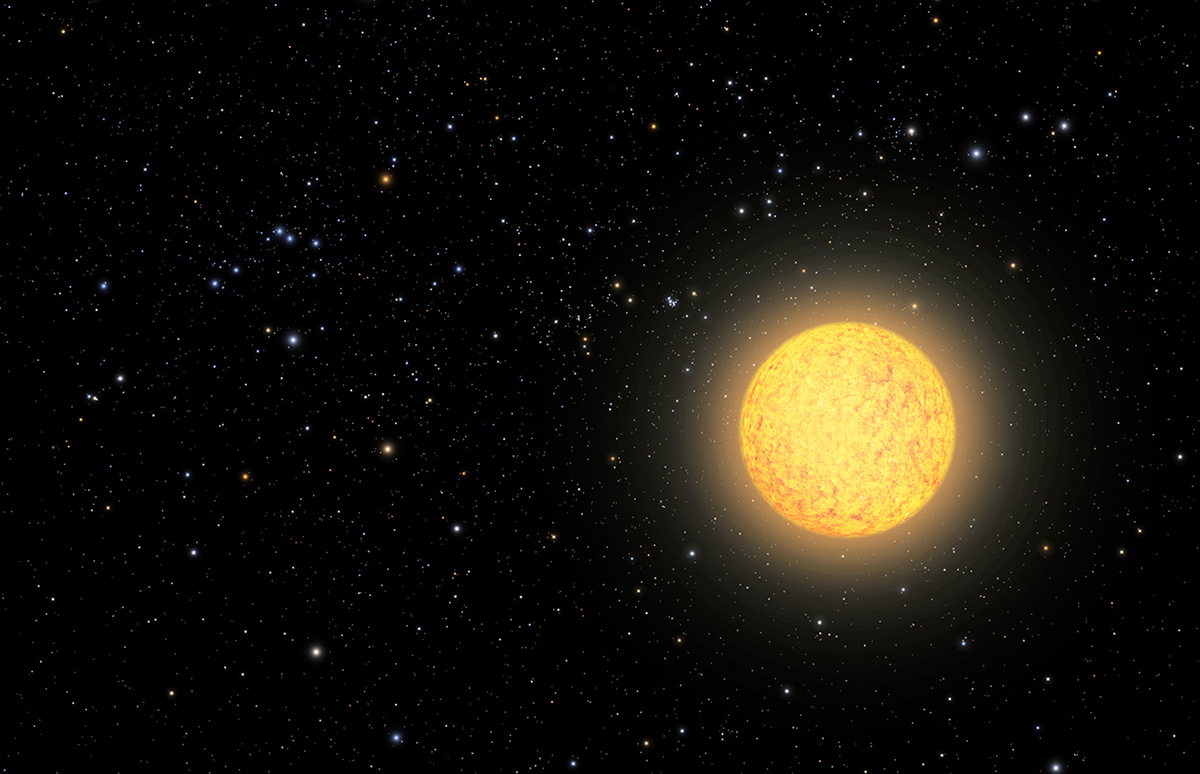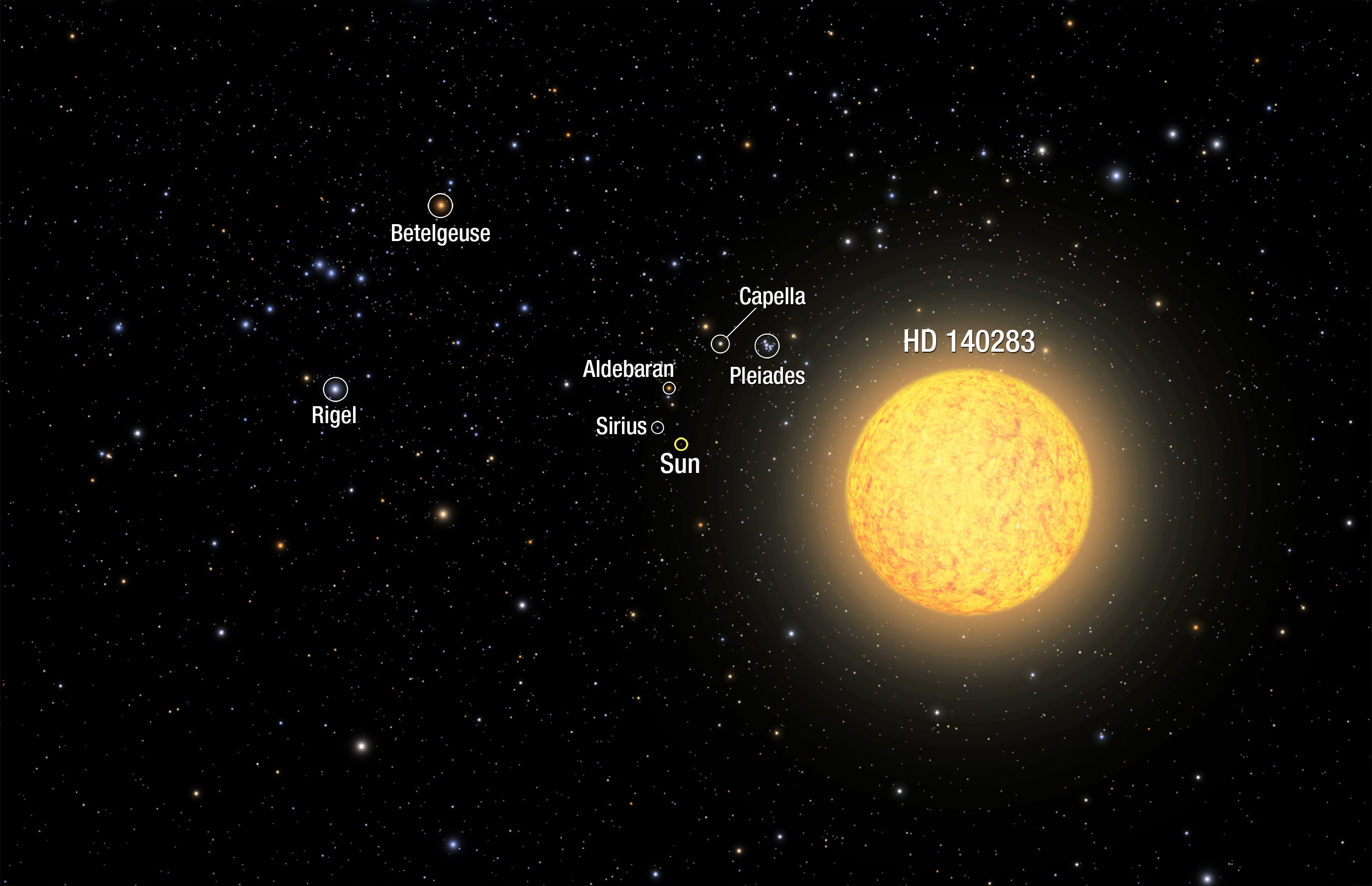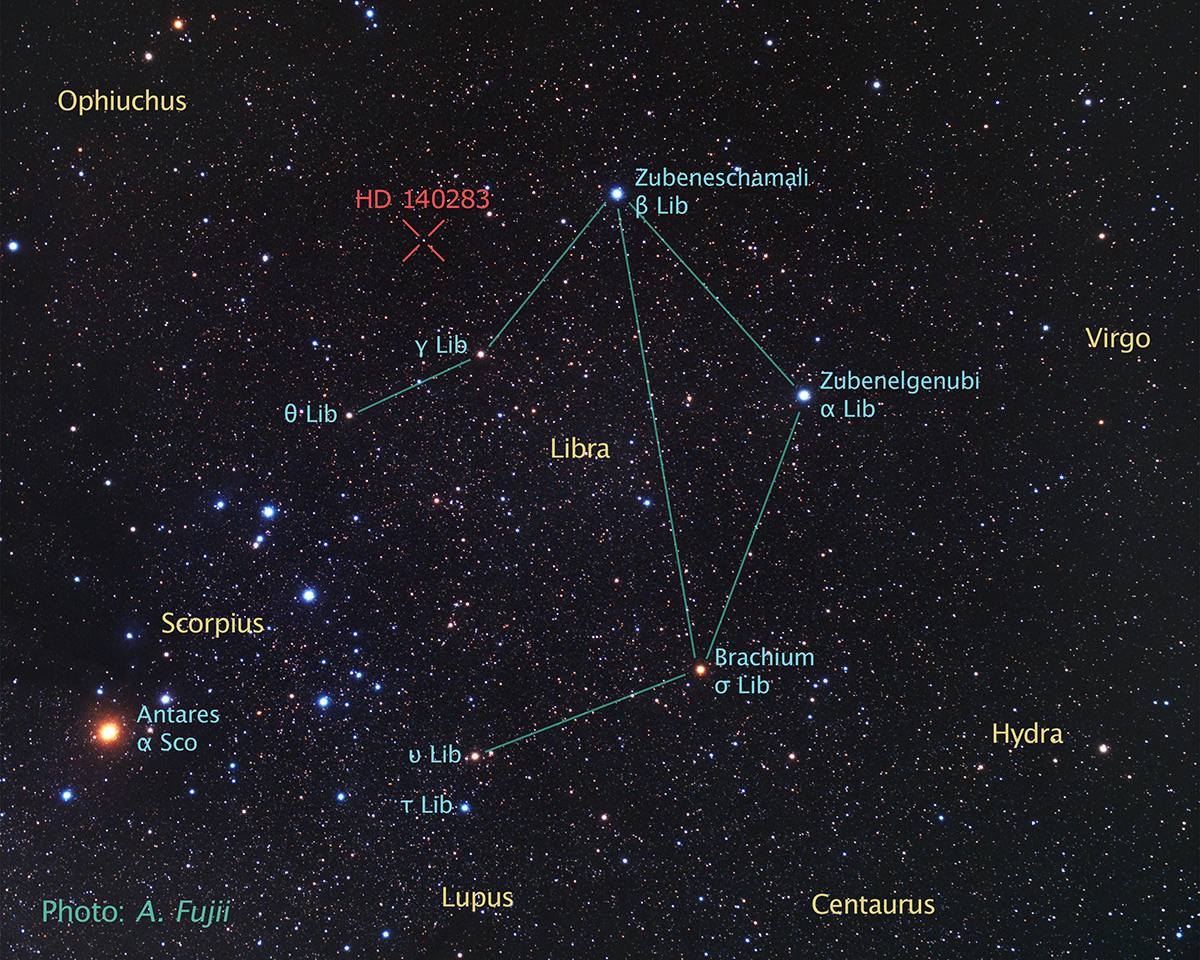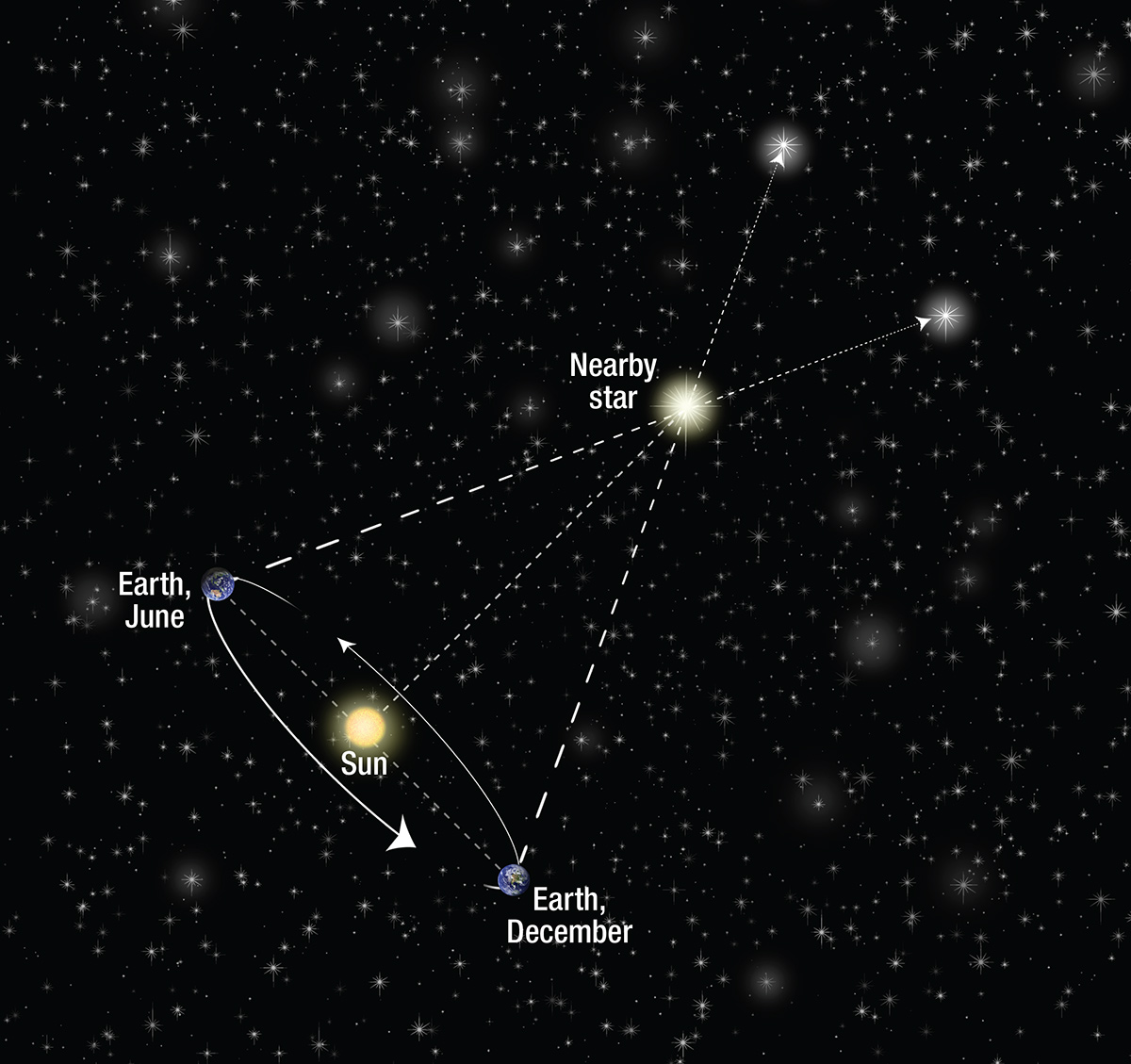The Methuselah Star: Oldest Known Star Revealed (Gallery)
Oldest Known Star HD 140283: Methuselah Star
This Digitized Sky Survey image shows the oldest star with a well-determined age in our galaxy. Called the Methuselah star, HD 140283 is 190.1 light-years away. Astronomers refined the star's age to about 14.5 billion years (which is older than the universe), plus or minus 800 million years. Image released March 7, 2013.
Oldest Known Star HD 140283: Artist's View
This is an illustration of the oldest star ever found in our solar neighborhood. The aging star, cataloged as HD 140283, lies 190.1 light-years from Earth. Astronomers refined the star's age to about 14.5 billion years (which is older than the universe), plus or minus 800 million years.
Icon in Space
Astronomers used the Hubble Space Telescope orbiting Earth to observe the Methuselah Star HD 140283 - the oldest known star in the sun's solar neighborhood.
Oldest Known Star HD 140283 & Neighbors
This artist's view shows the oldest known star HD 140283, which is about 190.1 light-years from Earth. Astronomers say the star looks like it is up to 14.5 billion years old, which would be older than the universe, if true. Because the aging star is relatively nearby, familiar stars and constellations as seen from Earth are in the sky, but in different locations, as seen in this annotated view.
At upper left is the constellation Orion, which looks distorted from our new perspective in space. Just to the upper left of the foreground star is the Pleiades cluster. To the lower left of the cluster, our Sun has dimmed to an apparent magnitude of +7, placing it below naked-eye visibility.
Oldest Known Star HD 140283: Backyard View
This is a backyard view of the sky surrounding the ancient star, cataloged as HD 140283, which lies 190.1 light-years from Earth. The star is the oldest known to astronomers to date. Image released March 7, 2013.
Parallax Star Distance Observation Explained
Distances to stars comparatively near to our Sun can be measured using trigonometric parallax. This can only be done if the star is close enough to show an apparent shift in position relative to much farther background stars, as seen at upper right. This requires viewing the star on two occasions, when Earth is at opposite sides of the Sun (seen at lower left). The Hubble Space Telescope can then precisely measure the very small angular displacement of the star between observations. When the offset value is combined using geometry with the value for Earth's orbital diameter, a precise distance can be calculated.
Breaking space news, the latest updates on rocket launches, skywatching events and more!

Tariq is the award-winning Editor-in-Chief of Space.com and joined the team in 2001. He covers human spaceflight, as well as skywatching and entertainment. He became Space.com's Editor-in-Chief in 2019. Before joining Space.com, Tariq was a staff reporter for The Los Angeles Times covering education and city beats in La Habra, Fullerton and Huntington Beach. He's a recipient of the 2022 Harry Kolcum Award for excellence in space reporting and the 2025 Space Pioneer Award from the National Space Society. He is an Eagle Scout and Space Camp alum with journalism degrees from the USC and NYU. You can find Tariq at Space.com and as the co-host to the This Week In Space podcast on the TWiT network. To see his latest project, you can follow Tariq on Twitter @tariqjmalik.






